Top 10 ancient towns and villages in China
Ancient towns and villages in China are places where traditions are well preserved in terms of architectures, lifestyles, folk songs and crafts. You can learn more about Hui-style architecture by visiting Hongcunand Xidi at the foot of Mountain Huangshan. Zhouzhuang, Wuzhenand Zhujiajiaoare representatives of beautiful South China water towns, while, Pingyaois a typical Chinese town in North China. Ancient villages in southwest China are the best places to see the traditional lifestyle of ethnic minorities, such as the Lijiang ancient townin Yunnan. The following is a brief listing of the most widely known ancient towns and villages in China, which you never miss visiting.
1. Lijiang in the southeast of Qinghai-Tibet Plateau, northwest plateau of Yunnan province
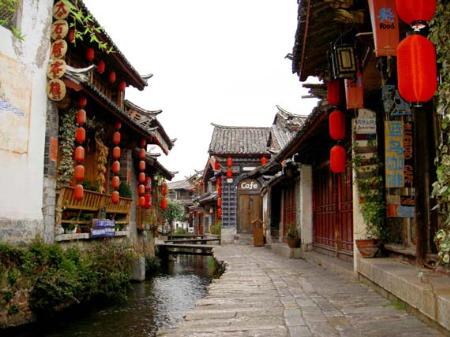
Lijiang ancient town is one of the last surviving ancient towns in China. Designated a UNESCO World Heritage Site in 1997, Lijiang's Naxi people still preserve much of their native Dongba culture and deep linkage to nature. Lijiang may spoil you. Snow-capped mountain vistas, ancient architecture and streetscapes, canals and waterways, and the people and their distinct culture give Lijiang its universal value to mankind. The aged wooden buildings decked with hanging red lanterns and local musicians playing the centuries old Naxi instruments in the time worn streets, display a lifestyle and culture that seems lost in time.
2. Zhouzhuang in east China's Jiangsu Province

Zhouzhuang, one of the most famous water townships in China, situated in Kunshan City which is only 30 kilometers southeast of Suzhou. It is a enchanting place. This village features crisscrossing water lanes, ancient bridges and buildings built on and over the rivers. In an area of half a square kilometer, 60 percent of the Zhouzhuang's structures were built during the Ming and Qing Dynasties. It is noted for its profound cultural background, the well preserved ancient residential houses, the elegant watery views and the strong local colored traditions and customs. Zhouzhuang has been called the "Venice of the East".
3. Hongcun near the southwestern slope of Huangshan Mountain, Anhui Province
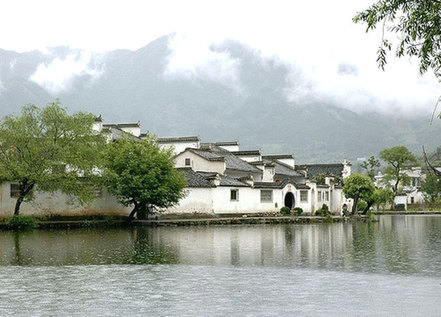
Hongcun Village is located near the southwestern slope of Huangshan Mountain. It is listed as one of China's top 10 charming villages and together with Xidi Village it was added to UNESCO's World Cultural Heritage List in 2000. Morning mists, gray tiles, white walls, stone bridges, water lily ponds, and hills at the background, are all elements of traditional Chinese landscape paintings. Hongcun Village has all of these features, and has been named "a village in the Chinese painting". It is an inspiration for artists and film directors. Hongcun Village was the location for one of the fighting scenes in the movie "Crouching Tiger, Hidden Dragon", directed by Ang Lee. The film won Oscars for the Best Foreign Film and Best Cinematography categories.
What makes Hongcun Village so unique is that the village was designed by a fengshui master to resemble a cow. Visitors to Hongcun Village's tour guides will interpret which part of the village is the anatomical equivalent to the cow. Hongcun has a elaborate web of gravel lanes and a complex watering system through which water from the outside pool can be directed to every family.
4. Wuzheng in the north of East China's Zhejiang Province

Wuzhen, a town with a history of 1200 years, is Located in the center of the six ancient towns south of Yangtze River, just 50 minutes' drive from Hangzhou. This small town, with its black tiled, oil-painted timber framework houses that contrast sharply with its white walls and gray flagging brings to mind a Chinese ink and wash painting, is notable as " home to celebraties". It has nurtured generations of predominant scholars, government officials, brilliant politicians, etc. The window sills of the houses on the banks of the river are further extended with boards, on which flowers, plants and bonsai bloom in the warm sunshine, adding a touch of life and color to this tranquil, old-style town.
5. Pingyao in central Shanxi province, Central China
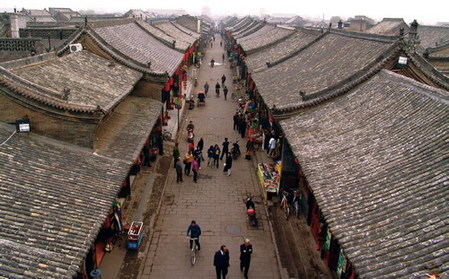
Pingyao in Shanxi Province is a well-preserved Ming Dynasty town, surrounded by a completely intact 6 km Ming dynasty city wall. During the Qing Dynasty, Pingyao was the financial center of China. What's unique here is this well-preserved ancient city with its grand, solemn city wall, its residences and shops, and even the government office all in the style of the Ming (1368-1644) and Qing (1644-1911). In 1997, when it was declared a World Cultural Heritage site for its Old City, Pingyao gradually opened up to the outside world and more and more people have come to have a look at this old city representing the prosperous past of Shanxi during the Ming and Qing eras.
6. Xidi near Huangshan Mountain in Anhui Province

The old trading town of Xidi, located 40km away from Huangshan Mountain in Anhui Province, is gem of the glorious Hui culture. With a history of over 900 years, Xidi Village is segmented by over 40 ancient winding and narrow lanes which are paved with bluestones. Visitors strolling through this ancient village will discover traditional Hui-style houses, ancestral temples, academies of classical learning, stone archways, white walls and grey tiles, beautifully paned windows, projecting horse-head walls, and stone slab bridge. These features are all centuries old and the residents live as they always have making Xidi Village an open-air museum.
7. Yongding in Southeast China's Fujian Province

Yongding, a county in Fujian Province, is the home of many Hakka families and is known for its unusual architecture called Tulou (Hakka Earthen Fortresses). These large, circular edifices were built by the Hakka, one ethnic group in China. The architectural art of Tulou enjoys great admiration among architects worldwide. The older examples of this style of construction consist of interior buildings enclosed by huge peripheral ones holding hundreds of rooms and dwellers. With all the halls, storehouses, wells and bedrooms inside, the huge towerlike building functions almost as a small fortified city.
Most earthen castles are not tourist traps. People really live and work here, and invariably, when you show up on their doorstep they will grin and say, "You've come! Have some tea!"
8. Tongli in east China's Jiangsu Province
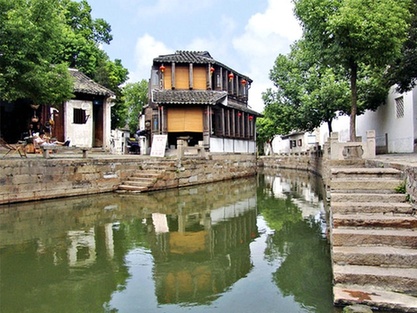
Tongli is an ancient water town in east China's Jiangsu Provinceb. A short drive from Suzhou, Tongli offers a step back in time. Crisscrossed by rivers and canals. Tongli enjoys fame across China for its beautiful rivers, historic bridges and opulent court yard homes. Tongli has 49 stone bridges and many gardens, temples. Because of the landscape, almost all of the buildings are constructed along the waterfront. The water also creates reflections of the town's arched roofs, lofty gables and stone bridges while green willows also line the banks can. This creates a truly poetic atmosphere.
9. Zhujiajiao on the outskirts of Shanghai
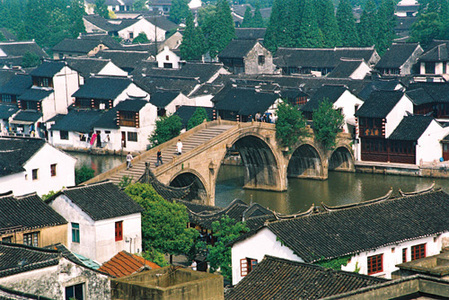
Zhujiajiao, which means "Zhu Family Settlement", is an ancient town located in the Qingpu District of Shanghai, and it is characteristic of the many water towns in the upper reach of the Yangtze River. Zhujiajiao is an ancient (formed about 1,700 years old) water township that some call the "Venice of Shanghai". 36 unique wood and stone bridges and numerous rivers line Zhujiajiao, and thousands of ancient buildings still line the riverbanks today. Many centuries-old stone buildings are home to residents today, as they were for many dynasties in the past. Holding an oiled paper umbrella in the rain, you walk in the long and narrow lanes paved with green flags. That kind of happiness with slightly sadness is what you only experience in person.
10. Dali in the western part of Southwest China's Yunnan Province
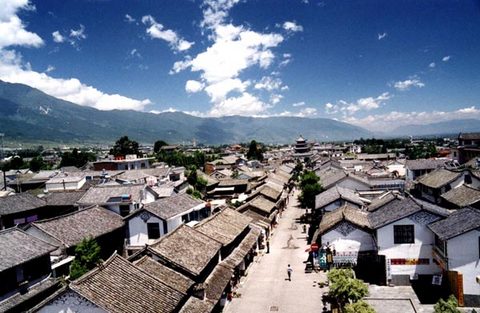
Dali Ancient City, or the ancient town of Dali, was set up in 1383 in the Ming Dynasty. It has a history of more than 600 years. This ancient city was once a vital communications hub where the population was dense. Many trade caravans gathered here and the markets were prosperous. On both sides of the street, there were numerous shops, inns, tea houses and restaurants, very bustling and exciting. Now, Dali is the economic and cultural center of the Dali Bai Autonomous Prefecture and one of the most beautiful and relaxing places in China. The area is surrounded by mountains. Here you will find 25 ethnic minorities, which have created a unique cultural heritage amidst the area's picturesque surroundings. The local government has given high priority to its preservation. So Dali Ancient City still remains its original looks. Now, the shops here mainly sell some locally-made handicraft articles: marble products, straw weaving wares, embroideries, wax printing clothes and other ornaments. Small retailers also sell some antiques, ancient paintings, old coins and silver wares.
 0
0 







